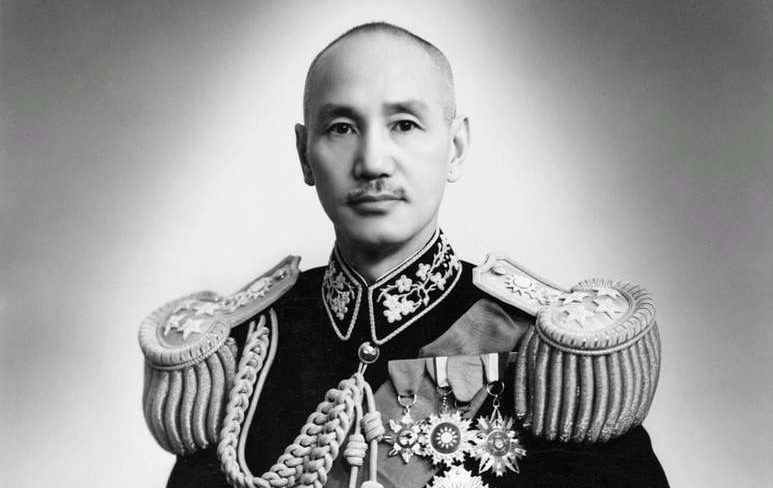Republicans are terrible on China. Examples abound, but perhaps the most instructive illustration of this long-term handicap comes from the following quotation:
“We must be prepared to go it alone in China if our allies desert us. We must not fool ourselves into thinking we can avoid taking up arms with the Chinese Reds. If we don’t fight them in China and Formosa [Taiwan] we’ll be fighting them in San Francisco, in Seattle, in Kansas City.”1Quoted from Chapter Ten, “World Affairs, 1953-1956,” of historian James T. Patterson’s Grand Expectations: the United States, 1945-1974, Volume Ten of the Oxford History of the United States
This wasn’t excerpted from a recent speech by Senator Tom Cotton (R-AK). Rather, it was by then-Senate Majority Leader William Knowland (R-CA), in the January 1954 edition of Collier’s Magazine. While perhaps particularly rabid in his Sinophobia, President Dwight D. Eisenhower privately opined that “Knowland has no foreign policy, except to develop high blood pressure whenever he mentions ‘Red China’…In his case, there seems to be no final answer to the question, ‘How stupid can you get?'”2Quoted from Chapter Ten, “Don’t Worry, I’ll Confuse Them,” of historian Evan Thomas’ Ike’s Bluff: President Eisenhower’s Secret Battle to Save the World The parallels between Knowland’s time and our own are significant. Representing the respective nadirs of Sino-American relations, they are worth considering in depth.
First, a necessary bit of high-level background.
In 1949 Mao Zedong and the Chinese Communist Party defeated the nominally republican forces of Chiang Kai-shek. Despite internal warnings that this was likely to happen, Chiang and his nationalist cronies being “thieves, every last one of them…corrupt as they come” according to President Harry Truman, this kicked off a firestorm in Washington3Quoted from Chapter Twelve, “Who Lost China?” of James Bradley’s The China Mirage: the Hidden History of American Disaster in Asia. “Who lost China?” subsequently became a driving force of the Second Red Scare that consumed American politics, distorting perceptions and constraining the ability of even the most powerful figures, such as Eisenhower or Secretary of State Dean Acheson, to act towards China in the more rational manner they would have liked.
Dean Acheson had presciently forecast as early as 1950 that Mao could be an “Asian Tito,” a disruptor of communist unity akin to the Yugoslav leader, Josip Broz Tito, Stalin’s bête noire. As things happened, however, the powerful China Lobby, led by men such as the editor of Time Henry Luce, was predictably able to push policy in the opposite direction.
For his part, Chiang refused to acknowledge defeat and demanded help retaking the mainland. While Eisenhower had bowed to domestic pressure to “unleash Chiang” in 1953, removing American impediments to cross-Strait engagement, further American support was not (yet) forthcoming. While Chiang’s friends worked on Washington, succeeding in securing for him more American planes and bombs, Chiang sought to do what he could to make life difficult for the new communist regime in Beijing. His policy of “Guanbi,” or “closed port policy,” involved the interdicting of foreign vessels bound for the mainland, eventually some one hundred in total.
The provocative policy prevented necessary trade and led to a series of skirmishes and several deaths, playing a larger role in precipitating what would come to be known as the First Taiwan Straits Crisis. In 1954 Chiang decided to fortify Quemoy and Matsu, islands so close to mainland China they’re visible from the shore on a clear day.
Predictably, the islands quickly came under bombardment by PRC forces. Resisting calls by the Joint Chiefs to either place U.S. troops in Taiwan or unleash nuclear weapons on mainland China, Eisenhower felt forced into the next worst thing. Concluding, in the words of Patterson, that “it would be politically risky to do nothing,” Eisenhower formalized the American commitment to defend Taiwan in the event of an attack. In making this commitment Eisenhower was careful to exclude islands such as Quemoy and Matsu, while also securing from Chiang a promise to cease unilateral military actions against the mainland.
That was in December 1954. When in January 1955 the PRC moved to occupy Inchaing, another of the contested islands (but some 200 miles to the north of Taiwan), Eisenhower asked Congress for authorization to defend “Formosa, the Pescadores and related positions,” the latter an archipelago of nearby islands. The so-called Formosa Resolution, which virtually ceded to the president the decision for war, passed the U.S. House of Representatives by a vote of 410-3 and the U.S. Senate by a vote of 85-3. President Lyndon Johnson later used the resolution, passed when he was Senate majority leader, to expand his predecessors’ war in Vietnam.
These actions did not defuse the situation, and several further confrontations eventually saw Eisenhower’s administration threaten the use of nuclear weapons against China.
The misaligned domestic political incentive structures, lack of strategic imagination, and abrogation of congressional duty that defined American policy toward China in the 1950s is eerily similar to contemporary efforts of Senators Bob Menendez (D-NJ) and Lindsey Graham (R-SC) to effectively gut the longstanding “One China policy.” Or of Senator Rick Scott (R-FL) to give whoever is president unilateral authority to intervene in the event of an attack on Taiwan.
The Taiwan Lobby to trying to sway decision-makers and American public opinion, and U.S. military leaders are advocating aggressive preparations on the basis of the most speculative reasoning.
Public Choice Theory easily explains this behavior: appearing tough is politically advantageous, while passing the buck for making the actually tough decisions is why Congress hasn’t officially declared war since the attack on Pearl Harbor. Meanwhile, a few million dollars spent by Taiwan sponsoring so-called “think tanks” or buying members of Congress is far cheaper than floating multi-billion dollar naval vessels of their own, while the concerned U.S. admirals and generals want to ensure their budgets climb and their commands expand.
In the words of Libertarian Institute Director Scott Horton, it is understandable but unacceptable.
The ability of client states to drag their patrons into conflicts is as old as Thucydides, as is their use of powerful interest groups within that patron state to influence policy decisions.
Such prior conflicts, however, did not threaten the destruction of human civilization.
This is no longer the case. Our policies must change.
































